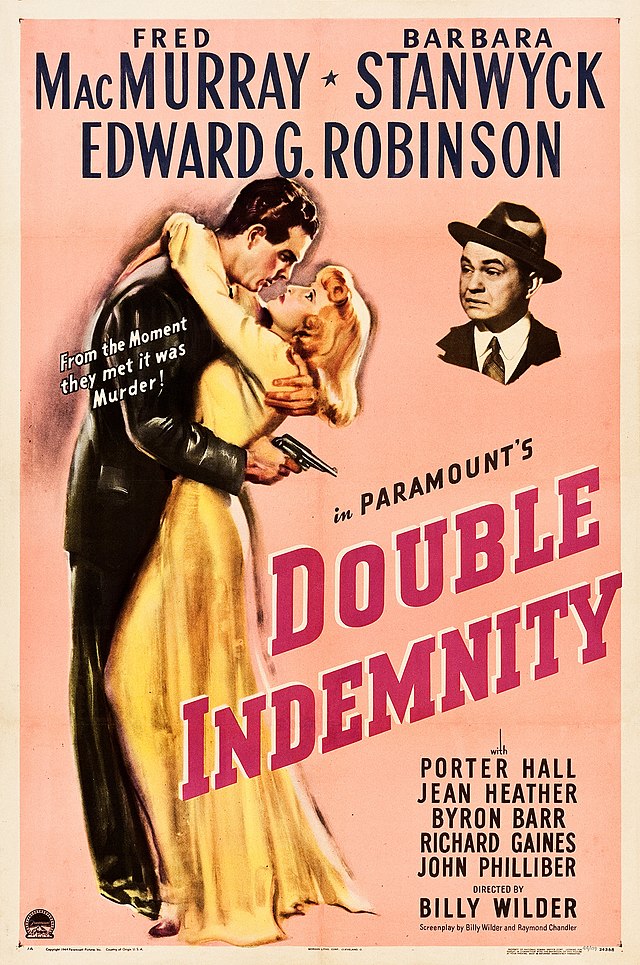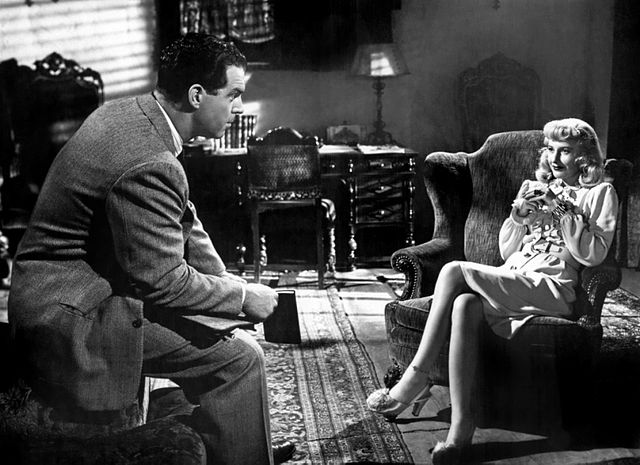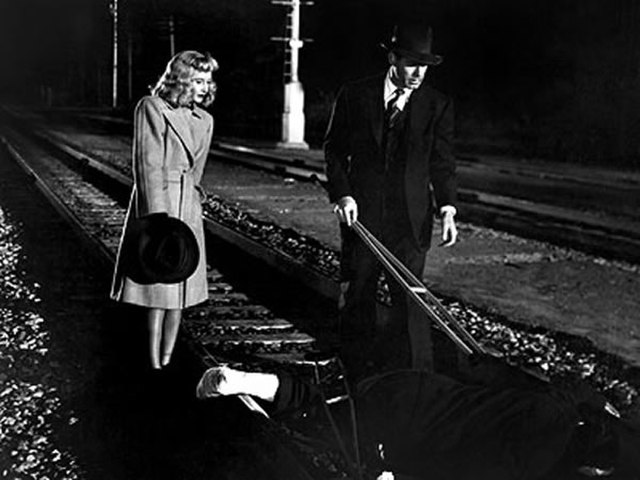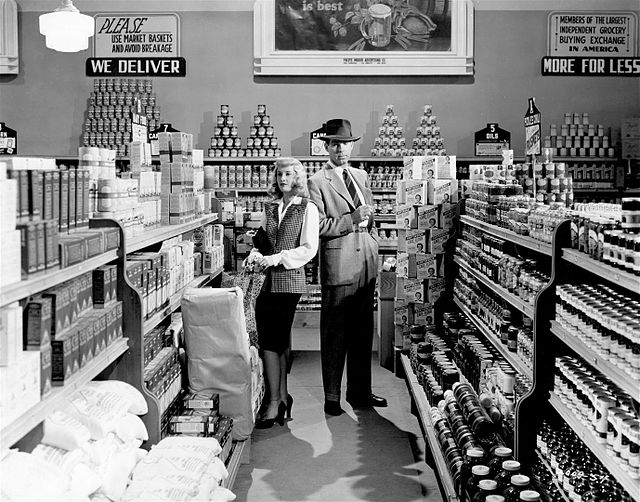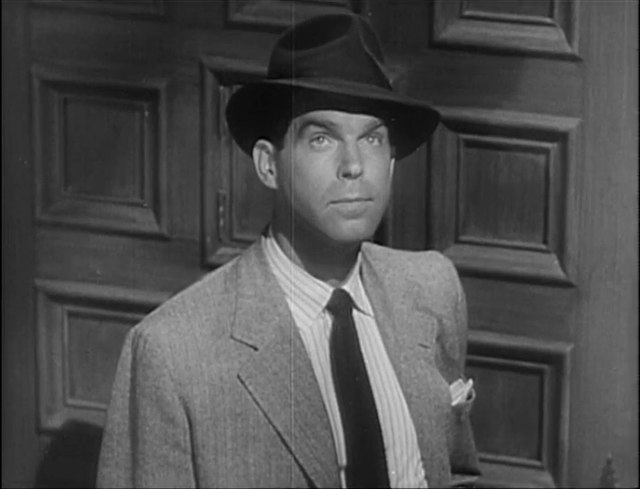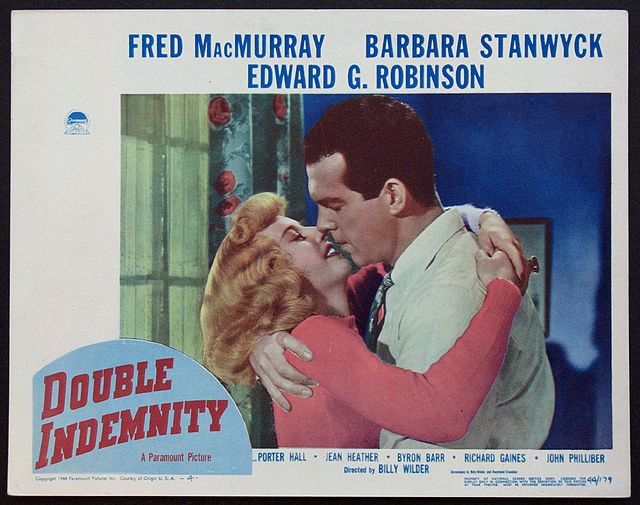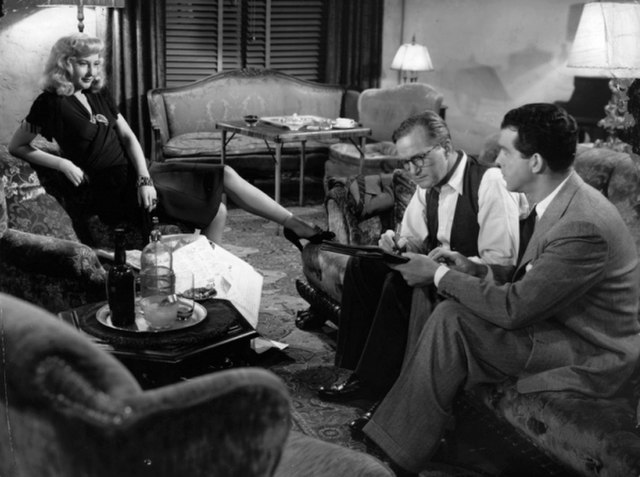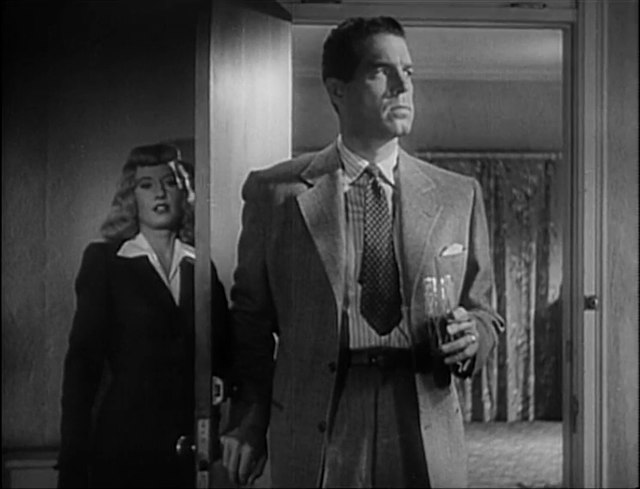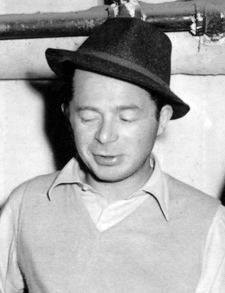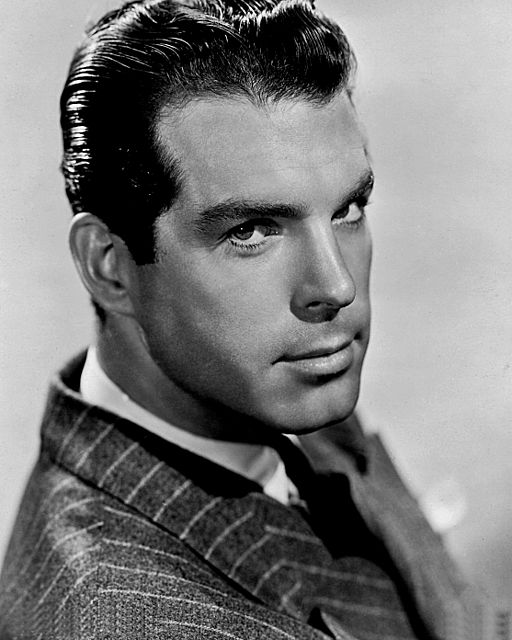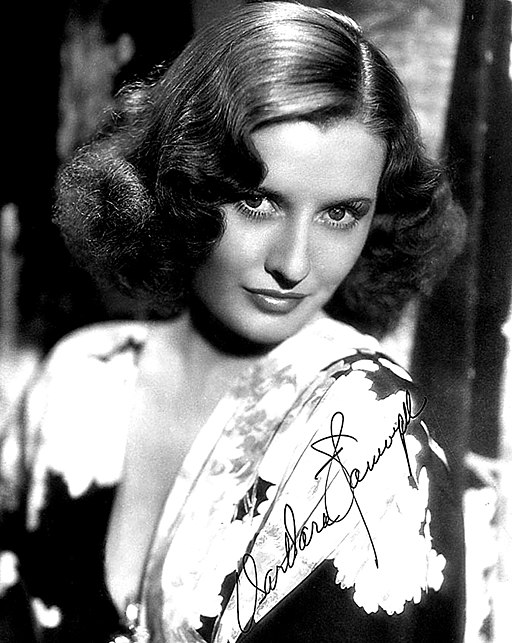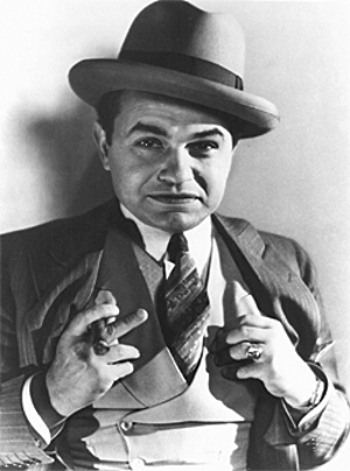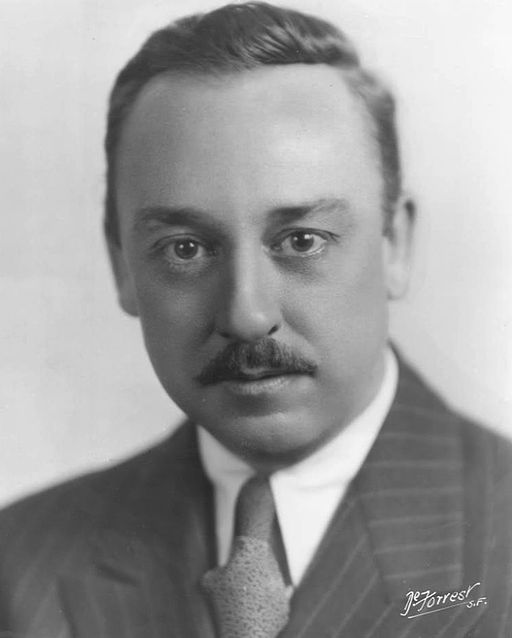Double Indemnity - 1944
back| Released by | Paramount Pictures |
| Director | Billy Wilder |
| Producer | Buddy DeSylva, Joseph Sistrom |
| Script | Billy Wilder, Raymond Chandler (based on the novel by James M. Cain) |
| Cinematography | John F. Seitz |
| Music by | Miklós Rózsa |
| Running time | 107 minutes |
| Film budget | $927,262 |
| Box office sales | $5 million |
| Main cast | Fred MacMurray - Barbara Stanwyck - Edward G. Robinson |
Double Indemnity
A Gripping Tale of Lust, Betrayal and Murder
"Double Indemnity" (1944), directed by Billy Wilder, is a quintessential film noir that tells the story of Walter Neff (Fred MacMurray), an insurance salesman who becomes entangled in a murder plot with the seductive Phyllis Dietrichson (Barbara Stanwyck) to kill her husband and collect on a double indemnity policy.
The plan unravels as Neff’s boss, Barton Keyes (Edward G. Robinson), becomes suspicious. The film's dark, atmospheric cinematography, sharp dialogue, and complex characters exemplify noir's themes of greed, betrayal, and moral decay. Its innovative narrative structure and masterful direction significantly influenced the genre and set a high standard for future noir films.
Related
Double Indemnity – 1944
Summary
Double Indemnity begins with insurance salesman Walter Neff (Fred MacMurray) stumbling into his office late at night, clearly wounded. He begins dictating a confession into a Dictaphone, addressing his boss, Barton Keyes (Edward G. Robinson). The story then unfolds in a series of flashbacks.
Neff first meets Phyllis Dietrichson (Barbara Stanwyck) during a routine visit to renew her husband's automobile insurance. Phyllis quickly seduces Neff and suggests they take out an accident insurance policy on her husband, Mr. Dietrichson, without his knowledge. She proposes they then murder him to collect on the policy’s “double indemnity” clause, which pays double for accidental deaths.
Neff is initially reluctant but succumbs to Phyllis's charms and agrees to the plan. They strategize meticulously, aiming to make Mr. Dietrichson’s death look like a train accident, which would trigger the double indemnity payout.
One night, Neff hides in the Dietrichsons’ car and waits for Mr. Dietrichson. Phyllis drives her husband to the train station under the guise of a business trip. Neff kills Mr. Dietrichson in the car, and they transport his body to the tracks, placing it in a way to make it seem like he fell off the train.
The plan appears successful at first, but Barton Keyes, a sharp and experienced claims adjuster, grows suspicious. His intuition tells him that the death was not accidental. He starts to piece together the clues, unaware that Neff, his trusted colleague, is involved.
As Keyes gets closer to the truth, Neff discovers that Phyllis has been manipulating him all along. He learns that Phyllis has a history of murderous schemes and that she has been seeing another man, Nino Zachetti (Byron Barr).
Realizing the depth of her deceit and the danger he’s in, Neff decides to confront Phyllis. In a climactic showdown at her home, Phyllis shoots Neff, but he survives long enough to kill her. Mortally wounded, Neff drives to his office to make his confession. The film ends with Keyes finding Neff in the office, where Neff collapses before he can finish his story.
Analysis
Double Indemnity is widely regarded as a quintessential film noir, featuring themes of greed, lust, and betrayal. Billy Wilder’s direction and Raymond Chandler’s screenplay, adapted from James M. Cain’s novel, create a tense, morally complex narrative.
Characters and Performances:
- Walter Neff: Fred MacMurray's portrayal of Neff captures the character's transformation from a confident, smooth-talking insurance salesman to a desperate, guilt-ridden man. Neff’s moral decline is central to the film's narrative, as he succumbs to Phyllis’s manipulative charm.
- Phyllis Dietrichson: Barbara Stanwyck delivers a powerful performance as the femme fatale. Her character embodies the archetype with her cold-blooded manipulation and ruthless ambition. Phyllis’s duplicity and her capacity for violence make her a classic noir antagonist.
- Barton Keyes: Edward G. Robinson's role as the doggedly persistent claims adjuster provides a moral counterpoint to Neff and Phyllis. Keyes’s dedication to uncovering the truth and his almost paternal relationship with Neff add depth to the story.
Themes:
- Greed and Moral Corruption: The film explores how ordinary people can be driven to commit heinous acts when tempted by greed. Neff’s initial motivation is a mix of lust and financial gain, but his descent into criminality leads to his eventual ruin.
- Femme Fatale: Phyllis Dietrichson epitomizes the femme fatale, luring Neff into her web of deceit. Her character is pivotal in illustrating how women in film noir often serve as catalysts for the male protagonist’s downfall.
- Fate and Guilt: The narrative structure, with Neff’s confession framing the story, emphasizes themes of fate and guilt. Neff’s inability to escape the consequences of his actions highlights the inevitability of justice in the noir universe.
Cinematography and Style: John F. Seitz’s cinematography plays a crucial role in creating the film’s dark, oppressive atmosphere. High-contrast lighting, deep shadows, and unconventional camera angles enhance the sense of foreboding and tension. The use of venetian blinds and low-key lighting is emblematic of the film noir aesthetic.
Music: Miklós Rózsa’s score complements the film’s mood, with its haunting and suspenseful themes underscoring key moments. The music enhances the emotional impact and helps to build tension throughout the narrative.
Conclusion: Double Indemnity is a masterclass in film noir, combining stellar performances, sharp dialogue, and a morally complex story. Billy Wilder’s direction and the collaborative scriptwriting with Raymond Chandler bring James M. Cain’s novel to life in a way that continues to influence the genre. The film’s exploration of themes like greed, betrayal, and moral ambiguity remains relevant, making it a timeless classic in American cinema.
Classic Trailer of Double Indemnity:
Full Cast:
· Fred MacMurray as Walter Neff
· Barbara Stanwyck as Phyllis Dietrichson
· Edward G. Robinson as Barton Keyes
· Porter Hall as Mr. Jackson
· Jean Heather as Lola Dietrichson
· Tom Powers as Mr. Dietrichson
· Byron Barr as Nino Zachetti
· Richard Gaines as Edward S. Norton Jr.
· Fortunio Bonanova as Sam Garlopis
· John Philliber as Joe Peters
· Raymond Chandler as Man reading book (uncredited cameo)
Masterful Direction of Billy Wilder:
Vision and Style: Billy Wilder’s direction in "Double Indemnity" is a masterful blend of style and substance, creating a film that is as visually compelling as it is narratively complex. Wilder, known for his versatility across genres, showcases his adeptness at film noir with a keen eye for detail and a deep understanding of the genre's conventions. He crafts a dark, suspenseful atmosphere that permeates the entire film, using visual and narrative techniques that have become hallmarks of noir cinema.
Narrative Structure: Wilder employs a flashback narrative structure, with the story being recounted through Walter Neff’s confession. This choice adds a layer of inevitability and fatalism to the plot, a common theme in film noir. The use of voice-over narration by Neff (Fred MacMurray) provides insight into his thoughts and motivations, while also heightening the tension as the audience knows from the beginning that Neff's scheme will unravel.
Character Direction: Wilder's direction of the actors is exemplary, bringing out nuanced performances that enhance the film's psychological depth. He elicits a transformation from Fred MacMurray, who was primarily known for his roles in light comedies, into a morally compromised and ultimately tragic figure. Barbara Stanwyck, as the femme fatale Phyllis Dietrichson, is directed to balance allure and danger, making her character both captivating and menacing. Edward G. Robinson’s portrayal of Barton Keyes is shaped by Wilder to be the moral backbone of the film, providing a counterbalance to Neff's descent into corruption.
Cinematography and Visuals: Collaborating with cinematographer John F. Seitz, Wilder creates a visual style that is quintessentially noir. The use of high-contrast lighting, deep shadows, and stark visual compositions reinforces the film's themes of duplicity and moral ambiguity. Wilder's direction ensures that every frame contributes to the oppressive, suspenseful atmosphere. The iconic scenes, such as the murder sequence in the car and the climactic confrontation between Neff and Phyllis, are masterfully staged to maximize tension and visual impact.
Pacing and Tension: Wilder maintains a tight narrative pace, carefully building suspense throughout the film. He balances moments of quiet tension with sudden bursts of action, keeping the audience on edge. The meticulous planning and execution of the murder plot are depicted with a slow-burning intensity, while the unraveling of the scheme is paced to gradually increase the stakes and sense of impending doom.
Thematic Depth: Under Wilder’s direction, "Double Indemnity" delves into themes of greed, betrayal, and the dark side of human nature. He explores the moral complexities of his characters, presenting them in shades of gray rather than clear-cut good or evil. This ambiguity is central to the film’s impact, as it forces the audience to grapple with the motivations and consequences of the characters’ actions.
Collaborative Approach: Wilder’s collaboration with screenwriter Raymond Chandler results in sharp, memorable dialogue that drives the film’s tension and character dynamics. His ability to work synergistically with his cast and crew is evident in the film’s cohesive and polished final product.
Complex and Perfect Performance of MacMurray:
Transformation and Casting: Fred MacMurray's casting as Walter Neff was a departure from his usual roles in light comedies and romantic films. Known for his affable and everyman persona, MacMurray's transformation into the morally conflicted insurance salesman was both surprising and revelatory. Director Billy Wilder saw potential in MacMurray to break away from his established typecasting, and this gamble paid off, showcasing MacMurray's versatility as an actor.
Character Complexity: As Walter Neff, MacMurray navigates a complex character arc from a charming, confident professional to a man ensnared by his own greed and lust. His portrayal captures the duality of Neff's nature—outwardly slick and self-assured, but inwardly vulnerable to manipulation and moral decay. MacMurray’s ability to convey this transformation is central to the film's impact.
Voice-Over Narration: One of the defining aspects of MacMurray's performance is his voice-over narration, which frames the film’s narrative. His delivery is laden with a mix of cynicism and regret, providing insight into Neff’s inner turmoil and the inevitability of his downfall. The weary, almost confessional tone of his narration sets the mood for the film and deepens the sense of fatalism.
Chemistry with Barbara Stanwyck: MacMurray's on-screen chemistry with Barbara Stanwyck, who plays the femme fatale Phyllis Dietrichson, is electric and pivotal to the film’s tension. MacMurray convincingly portrays Neff’s initial attraction and eventual disillusionment with Phyllis. Their scenes together crackle with a mix of seduction and danger, highlighting Neff’s descent as he becomes entangled in Phyllis’s lethal scheme.
Emotional Range: Throughout the film, MacMurray exhibits a wide emotional range, effectively capturing Neff’s shifting states of mind. His initial confidence and bravado give way to anxiety and paranoia as Keyes (Edward G. Robinson) begins to suspect foul play. MacMurray’s subtle shifts in expression and tone reflect Neff’s growing desperation and guilt, particularly as the plan unravels and he realizes the extent of Phyllis's deceit.
Key Scenes:
- The Murder Scene: MacMurray’s performance during the murder of Mr. Dietrichson is chillingly effective. His calm, methodical approach contrasts sharply with the horror of the act, underscoring Neff’s initial detachment from the gravity of his crime.
- Confrontation with Phyllis: In the climactic scene where Neff confronts Phyllis, MacMurray’s portrayal of betrayal and rage is intense. His interactions with Stanwyck in this scene are charged with emotion, culminating in a powerful and tragic resolution.
- Final Confession: In the final scene, as Neff confesses to Keyes, MacMurray’s portrayal is one of exhaustion and resignation. The physical and emotional toll of his actions is evident, bringing his character’s journey full circle.
Physicality and Presence: MacMurray’s physical presence in the film contributes to the character’s believability. He carries himself with the ease and confidence of a successful salesman, but as the plot thickens, his body language reflects his increasing unease and paranoia. This physical transformation complements his vocal performance, enhancing the overall portrayal.
Conclusion
Fred MacMurray’s performance in "Double Indemnity" is a standout example of an actor breaking away from typecasting to deliver a complex and compelling character. His portrayal of Walter Neff is nuanced and multifaceted, capturing the character’s descent from confident professional to morally compromised criminal. MacMurray’s ability to convey a wide range of emotions, coupled with his strong chemistry with co-stars and effective use of voice-over narration, makes his performance a critical element in the film’s enduring success and impact as a classic of film noir.
Notable Quotes from the Film:
· Walter Neff's Narration:
"I killed Dietrichson. Me, Walter Neff, insurance agent, 35 years old, unmarried, no visible scars. Until a while ago, that is. Yes, I killed him. I killed him for money and for a woman. And I didn't get the money, and I didn't get the woman. Pretty, isn't it?"
· Walter Neff to Phyllis Dietrichson:
"Yes, I killed him. I killed him for money and for a woman. I didn't get the money and I didn't get the woman."
· Phyllis Dietrichson:
"We're both rotten."
"It's straight down the line for both of us, remember?"
· Barton Keyes:
"Murder's never perfect. Always comes apart sooner or later. And when two people are involved, it's usually sooner."
"Closer than that, Walter. I love you too."
· Walter Neff to Barton Keyes:
"How could I have known that murder can sometimes smell like honeysuckle?"
"You know why you couldn't figure this one, Keyes? I'll tell you. Because the guy you were looking for was too close. He was right across the desk from you."
· Phyllis Dietrichson:
"We're both rotten."
· Walter Neff:
"I couldn't hear my own footsteps. It was the walk of a dead man."
· Barton Keyes:
"I always knew you were going to kill me. But I wasn't sure when."
"The machinery had already been set in motion. The gears had started to mesh."
Awards and Recognition:
Academy Awards (Oscars) - 1945
Nominated:
- Best Picture
- Best Director (Billy Wilder)
- Best Actress in a Leading Role (Barbara Stanwyck)
- Best Writing, Screenplay (Raymond Chandler, Billy Wilder)
- Best Cinematography, Black-and-White (John F. Seitz)
- Best Sound, Recording (Loren L. Ryder, Paramount Studio Sound Department)
- Best Music, Scoring of a Dramatic or Comedy Picture (Miklós Rózsa)
National Film Registry
Inducted: 1992
Selected for preservation in the United States National Film Registry by the Library of Congress as being "culturally, historically, or aesthetically significant."
Directors Guild of America (DGA) Awards
Won:
Outstanding Directorial Achievement in Motion Pictures (Billy Wilder) - This award was established later and Wilder was retroactively recognized for his contribution to film direction.
Golden Globe Awards
Note: The Golden Globe Awards were not as comprehensive in 1945, and "Double Indemnity" did not receive nominations or awards from the Hollywood Foreign Press Association during its initial release period.
American Film Institute (AFI) Recognition
- AFI's 100 Years...100 Movies (1998)
Ranked #38
- AFI's 100 Years...100 Movies (10th Anniversary Edition, 2007)
Ranked #29
- AFI's 100 Years...100 Thrills
Ranked #24
- AFI's 100 Years...100 Passions
Ranked #84
- AFI's 100 Years...100 Heroes & Villains
Phyllis Dietrichson - Ranked #8 Villain
Other Recognitions
- National Board of Review (1944)
Best Acting (Barbara Stanwyck)

